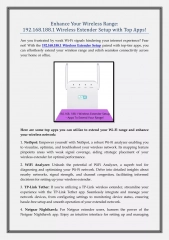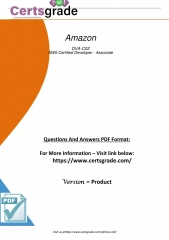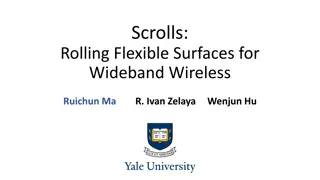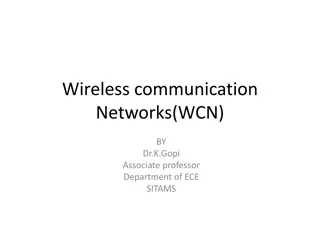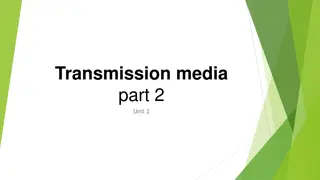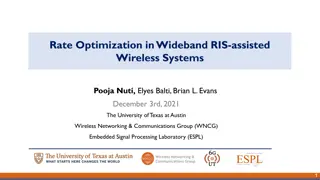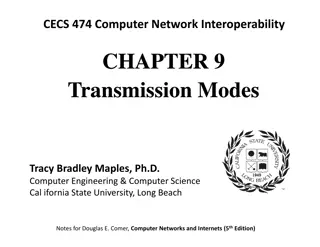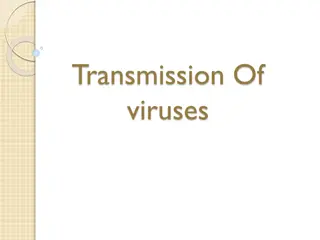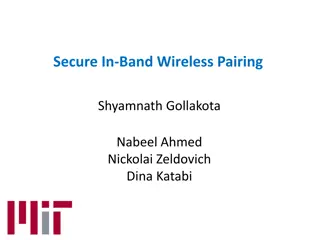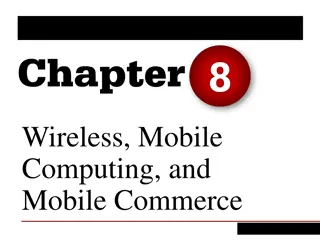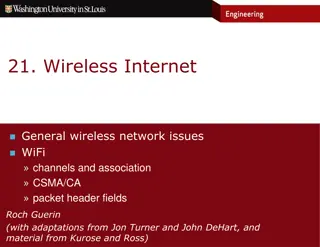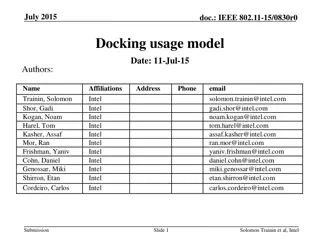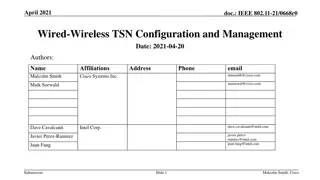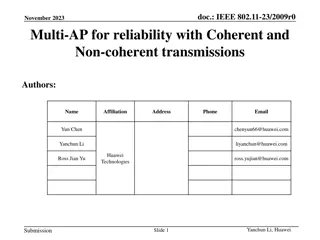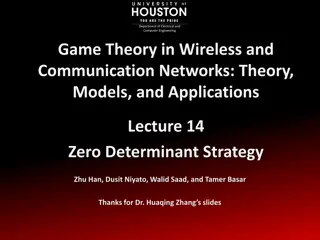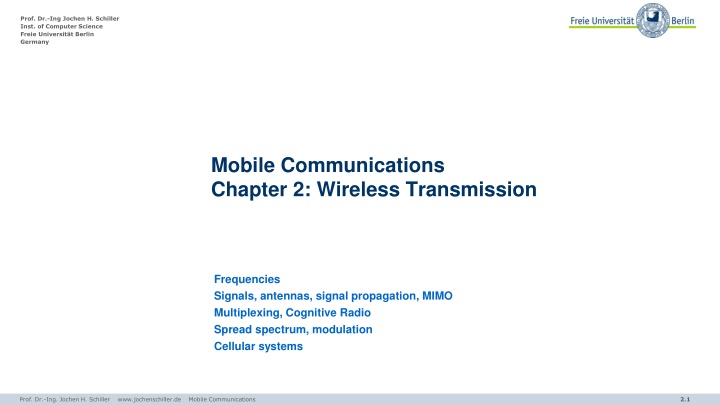
Wireless Communication Frequencies and Regulations Overview
Explore the various frequency bands used in mobile communication systems, from Very Low Frequency (VLF) to Extra High Frequency (EHF), along with examples of frequency allocations in regions like Europe, USA, and Japan. Understand the impact of frequency ranges on mobile communication technologies and regulations governing their usage.
Download Presentation

Please find below an Image/Link to download the presentation.
The content on the website is provided AS IS for your information and personal use only. It may not be sold, licensed, or shared on other websites without obtaining consent from the author. If you encounter any issues during the download, it is possible that the publisher has removed the file from their server.
You are allowed to download the files provided on this website for personal or commercial use, subject to the condition that they are used lawfully. All files are the property of their respective owners.
The content on the website is provided AS IS for your information and personal use only. It may not be sold, licensed, or shared on other websites without obtaining consent from the author.
E N D
Presentation Transcript
Prof. Dr.-Ing Jochen H. Schiller Inst. of Computer Science Freie Universit t Berlin Germany Mobile Communications Chapter 2: Wireless Transmission Frequencies Signals, antennas, signal propagation, MIMO Multiplexing, Cognitive Radio Spread spectrum, modulation Cellular systems Prof. Dr.-Ing. Jochen H. Schiller www.jochenschiller.de Mobile Communications 2.1
Frequencies for communication VLF = Very Low Frequency LF = Low Frequency MF = Medium Frequency HF = High Frequency VHF = Very High Frequency UHF = Ultra High Frequency SHF = Super High Frequency EHF = Extra High Frequency UV = Ultraviolet Light Frequency and wave length - = c/f - wave length , speed of light c 3x108m/s, frequency f twisted pair coax cable optical transmission 100 m 3 THz 1 m 300 THz 1 Mm 300 Hz 10 km 30 kHz 100 m 3 MHz 1 m 10 mm 30 GHz 300 MHz visible light VLF LF MF HF VHF UHF SHF EHF infrared UV Prof. Dr.-Ing. Jochen H. Schiller www.jochenschiller.de Mobile Communications 2.2
Example frequencies for mobile communication VHF-/UHF-ranges for mobile radio - simple, small antenna for cars - deterministic propagation characteristics, reliable connections SHF and higher for directed radio links, satellite communication - small antenna, beam forming - large bandwidth available Wireless LANs use frequencies in UHF to SHF range - some systems planned up to EHF - limitations due to absorption by, e.g., water (dielectric heating, see microwave oven) - weather dependent fading, signal loss caused by heavy rainfall etc. Prof. Dr.-Ing. Jochen H. Schiller www.jochenschiller.de Mobile Communications 2.3
Frequencies and regulations Examples Europe USA Japan GSM 880-915, 925-960, 1710- 1785, 1805-1880 UMTS 1920-1980, 2110-2170 LTE 791-821, 832-862, 2500- 2690 PDC, FOMA 810-888, 893-958 PDC 1429-1453, 1477-1501 FOMA 1920-1980, 2110-2170 AMPS, TDMA, CDMA, GSM 824-849, 869-894 TDMA, CDMA, GSM, UMTS 1850-1910, 1930-1990 Cellular networks CT1+ 885-887, 930-932 CT2 864-868 DECT 1880-1900 PACS 1850-1910, 1930-1990 PACS-UB 1910-1930 PHS 1895-1918 JCT 245-380 Cordless phones 802.11b/g 2412-2472 802.11b/g 2412-2462 802.11b 2412-2484 802.11g 2412-2472 Wireless LANs 27, 128, 418, 433, 868 315, 915 426, 868 Other RF systems In general: ITU-R holds auctions for new frequencies, manages frequency bands worldwide (WRC, World Radio Conferences); 3GPP specific: see e.g. 3GPP TS 36.101 V16.5.0 (2020-03) Prof. Dr.-Ing. Jochen H. Schiller www.jochenschiller.de Mobile Communications 2.4
Great flexibility with LTE See, e.g., en.wikipedia.org/wiki/LTE_frequency_bands or 3GPP TS 36.101 E-UTRA: User Equipment (UE) radio transmission and reception Prof. Dr.-Ing. Jochen H. Schiller www.jochenschiller.de Mobile Communications 2.5
Signals I Physical representation of data Function of time and location Signal parameters: parameters representing the value of data Classification - continuous time/discrete time - continuous values/discrete values - analog signal = continuous time and continuous values - digital signal = discrete time and discrete values Signal parameters of periodic signals: - period T, frequency f=1/T, amplitude A, phase shift - sine wave as special periodic signal for a carrier: s(t) = Atsin(2 ftt + t) Prof. Dr.-Ing. Jochen H. Schiller www.jochenschiller.de Mobile Communications 2.6
Fourier representation of periodic signals 1 = = = + + ( ) sin( 2 ) cos( 2 ) g t c a nft b nft n n 2 1 1 n n 1 1 0 0 t t ideal periodic signal real composition (based on harmonics) Prof. Dr.-Ing. Jochen H. Schiller www.jochenschiller.de Mobile Communications 2.7
Real technical systems are always bandwidth-limited attenuation threshold 0 frequency [Hz] bandwidth Prof. Dr.-Ing. Jochen H. Schiller www.jochenschiller.de Mobile Communications 2.8
Signals II Different representations of signals - amplitude (amplitude domain) - frequency spectrum (frequency domain) - constellation diagram (amplitude M and phase in polar coordinates) Q = M sin A [V] A [V] t[s] I= M cos f [Hz] Composed signals transferred into frequency domain using Fourier transformation Digital signals need - infinite frequencies for perfect transmission - modulation with a carrier frequency for transmission (analog signal!) Prof. Dr.-Ing. Jochen H. Schiller www.jochenschiller.de Mobile Communications 2.9
Antennas: isotropic radiator Radiation and reception of electromagnetic waves, coupling of wires to space for radio transmission Isotropic radiator: equal radiation in all directions (three dimensional) - only a theoretical reference antenna Real antennas always have directive effects (vertically and/or horizontally) Radiation pattern: measurement of radiation around an antenna z y z ideal isotropic radiator y x x Prof. Dr.-Ing. Jochen H. Schiller www.jochenschiller.de Mobile Communications 2.10
Antennas: simple dipoles Real antennas are not isotropic radiators but, e.g., dipoles with lengths /4 on car roofs or /2 as Hertzian dipole shape of antenna proportional to wavelength /4 /2 Example: Radiation pattern of a simple Hertzian dipole y y z simple dipole x z x side view (xy-plane) side view (yz-plane) top view (xz-plane) Gain: maximum power in the direction of the main lobe compared to the power of an isotropic radiator (with the same average power) Prof. Dr.-Ing. Jochen H. Schiller www.jochenschiller.de Mobile Communications 2.11
Antennas: directed and sectorized Often used for microwave connections or base stations for mobile phones (e.g., radio coverage of a valley) y y z directed antenna x z x side view (xy-plane) side view (yz-plane) top view (xz-plane) z z sectorized antenna x x top view, 3 sector top view, 6 sector Prof. Dr.-Ing. Jochen H. Schiller www.jochenschiller.de Mobile Communications 2.12
Antennas: diversity Grouping of 2 or more antennas - multi-element antenna arrays Antenna diversity - switched diversity, selection diversity - receiver chooses antenna with largest output - diversity combining - combine output power to produce gain - cophasing needed to avoid cancellation /2 /2 /4 /2 /4 /2 + + ground plane Prof. Dr.-Ing. Jochen H. Schiller www.jochenschiller.de Mobile Communications 2.13
MIMO Multiple-Input Multiple-Output - use of several antennas at receiver and transmitter - increased data rates and transmission range without additional transmit power or bandwidth via higher spectral efficiency, higher link robustness, reduced fading Examples - IEEE 802.11n, LTE, HSPA+, Functions - beamforming : emit the same signal from all antennas to maximize signal power at receiver antenna - spatial multiplexing: split high-rate signal into multiple lower rate streams and transmit over different antennas - diversity coding: transmit single stream over different antennas with (near) orthogonal codes t1 t3 t2 3 1 Sending time 1: t0 2: t0-d2 3: t0-d3 sender Time of flight t2=t1+d2 t3=t1+d3 2 receiver Prof. Dr.-Ing. Jochen H. Schiller www.jochenschiller.de Mobile Communications 2.14
Questions & Tasks - Frequency regulations may differ between countries. Check out the regulations valid for your country (within Europe CEPT may be able to help you, https://www.cept.org/, for the US try the FCC, www.fcc.gov, for Japan ARIB, www.arib.or.jp). - Why can waves with a very low frequency follow the earth s surface? Why are they not used for data transmission in computer networks? - Why does the ITU-R only regulate lower frequencies (up to some hundred GHz) and not higher frequencies (in the THz range)? - What are the two different approaches in regulation regarding mobile phone systems in Europe and the US? What are the consequences? - Why is the international availability of the same ISM bands important? - Is it possible to transmit a digital signal, e.g., coded as square wave as used inside a computer, using radio transmission without any loss? Why? - Is a directional antenna useful for mobile phones? Why? How can the gain of an antenna be improved? - If you are unsure about Shannon, Nyquist etc. go back to our Computer Networks lecture and refresh your knowledge! Prof. Dr.-Ing. Jochen H. Schiller www.jochenschiller.de Mobile Communications 2.15
Signal propagation ranges Transmission range - communication possible - low error rate Detection range - detection of the signal possible - no communication possible sender transmission Interference range - signal may not be detected - signal adds to the background noise distance detection interference Warning: figure misleading bizarre shaped, time-varying ranges in reality! Prof. Dr.-Ing. Jochen H. Schiller www.jochenschiller.de Mobile Communications 2.16
Signal propagation Propagation in free space always like light (straight line) Receiving power proportional to 1/d in vacuum much more attenuation in real environments, e.g., d3.5 d4 (d = distance between sender and receiver) Receiving power additionally influenced by - fading (frequency dependent) - shadowing - reflection at large obstacles - refraction depending on the density of a medium - scattering at small obstacles - diffraction at edges refraction shadowing reflection scattering diffraction Prof. Dr.-Ing. Jochen H. Schiller www.jochenschiller.de Mobile Communications 2.17
Real world examples www.ihe.kit.edu/index.php Prof. Dr.-Ing. Jochen H. Schiller www.jochenschiller.de Mobile Communications 2.18
Multipath propagation Signal can take many different paths between sender and receiver due to reflection, scattering, diffraction multipath pulses LOS pulses LOS (line-of-sight) signal at sender signal at receiver Time dispersion: signal is dispersed over time - interference with neighbor symbols, Inter Symbol Interference (ISI) The signal reaches a receiver directly and phase shifted - distorted signal depending on the phases of the different parts Prof. Dr.-Ing. Jochen H. Schiller www.jochenschiller.de Mobile Communications 2.19
Effects of mobility Channel characteristics change over time and location - signal paths change - different delay variations of different signal parts - different phases of signal parts quick changes in the power received (short term/fast fading) long term fading power Additional changes in - distance to sender - obstacles further away slow changes in the average power received (long term/slow fading) t short term fading Prof. Dr.-Ing. Jochen H. Schiller www.jochenschiller.de Mobile Communications 2.20
Questions & Tasks - What are the main problems of signal propagation? Why do radio waves not always follow a straight line? Why is reflection both useful and harmful? - Although the examples shown here reflect real world characteristics they miss several important aspects. What could it be? What else could influence signal propagation in a real world? - Multipath propagation seems to be harmful, but where could it help? Can a system benefit from multipath propagation? How? - Name several methods for ISI mitigation. How does ISI depend on the carrier frequency, symbol rate, and motion of sender/receiver? What are the influences of ISI on TDM schemes? - Remember physics in high school where did you see certain propagation patterns of waves that can lead to short term fading? - What could a radio receiver do against fast fading or slow fading, respectively? Prof. Dr.-Ing. Jochen H. Schiller www.jochenschiller.de Mobile Communications 2.21
Multiplexing Multiplexing in 5 dimensions - space (si) - time (t) - frequency (f) - code (c) - polarization (p) Space-division multiplexing (SDM) channels ki c k1 k2 k3 k4 k5 k6 t c t s1 f Goal: multiple use of a shared medium s2 c f t Important: guard spaces needed! s3 f Prof. Dr.-Ing. Jochen H. Schiller www.jochenschiller.de Mobile Communications 2.22
Frequency-division multiplexing (FDM) Separation of the whole spectrum into smaller frequency bands A channel gets a certain band of the spectrum for the whole time - Examples: classical analog TV/radio Advantages - no dynamic coordination necessary - works also for analog signals k1 k2 k3 k4 k5 k6 c f Disadvantages - waste of bandwidth if the traffic is distributed unevenly - inflexible t Prof. Dr.-Ing. Jochen H. Schiller www.jochenschiller.de Mobile Communications 2.23
Time-division multiplexing (TDM) A channel gets the whole spectrum for a certain amount of time - Example: round-table discussions Advantages - only one carrier in the medium at any time - throughput high even for many users k1 k2 k3 k4 k5 k6 c Disadvantages - precise synchronization necessary f t Prof. Dr.-Ing. Jochen H. Schiller www.jochenschiller.de Mobile Communications 2.24
Time- and frequency-division multiplexing Combination of both methods A channel gets a certain frequency band for a certain amount of time - Examples: GSM, Bluetooth Advantages - better protection against tapping - protection against frequency selective interference but: precise coordination required k1 k2 k3 k4 k5 k6 c f t Prof. Dr.-Ing. Jochen H. Schiller www.jochenschiller.de Mobile Communications 2.25
Cognitive Radio Typically in the form of a spectrum sensing CR - Detect unused spectrum and share with others avoiding interference - Choose automatically best available spectrum (intelligent form of time/frequency/space multiplexing) Distinguish - Primary Users (PU): users assigned to a specific spectrum by e.g. regulation - Secondary Users (SU): users with a CR to use unused spectrum Examples - Reuse of (regionally) unused analog TV spectrum (aka white space) - Temporary reuse of unused spectrum e.g. of pagers, amateur radio etc. f SU PU SU SU PU SU PU SU PU PU PU PU PU PU SU SU SU PU PU SU SU t space mux frequency/time mux Prof. Dr.-Ing. Jochen H. Schiller www.jochenschiller.de Mobile Communications 2.26
Code-division multiplexing (CDM) Each channel has a unique code k1 k2 k3 k4 k5 k6 All channels use the same spectrum at the same time - Example: UMTS c Advantages - bandwidth efficient - no coordination and synchronization necessary - good protection against interference and tapping f Disadvantages - varying user data rates - more complex signal regeneration t Implemented using spread spectrum technology Prof. Dr.-Ing. Jochen H. Schiller www.jochenschiller.de Mobile Communications 2.27
Polarization-division multiplexing (PDM) Each channel has a unique polarization - by convention: electric field considered (magnetic field always at right angle to electric field) - e.g. vertical vs. horizontal, right vs. left circular Examples: Satellite-TV, microwave links Advantages - increased bandwidth (e.g. doubled in satellite dish) - no coordination and synchronization necessary Disadvantages - perfect, ideal polarization not always feasible - cross-polarization interference (one polarization leaks into another) Source: https://www.data-alliance.net Prof. Dr.-Ing. Jochen H. Schiller www.jochenschiller.de Mobile Communications 2.28
Questions & Tasks - Look at the multiplexing examples. What are the guard spaces in each of the technologies? - Find out in which regions cognitive radios can use free spectrum e.g. from unused analog TV. What do other regions do with the old spectrum? - Do you know polarization from other areas? - Do you know of other combinations of multiplexing schemes? Prof. Dr.-Ing. Jochen H. Schiller www.jochenschiller.de Mobile Communications 2.29
Modulation Digital modulation - digital data is translated into an analog signal (baseband) - ASK, FSK, PSK - main focus in this chapter - differences in spectral efficiency, power efficiency, robustness Analog modulation - shifts center frequency of baseband signal up to the radio carrier - Motivation - smaller antennas (e.g., /4) - Frequency Division Multiplexing - medium characteristics - Basic schemes - Amplitude Modulation (AM) - Frequency Modulation (FM) - Phase Modulation (PM) Prof. Dr.-Ing. Jochen H. Schiller www.jochenschiller.de Mobile Communications 2.30
Modulation and demodulation analog baseband signal digital data digital modulation analog modulation radio transmitter 101101001 radio carrier analog baseband signal digital data analog demodulation synchronization decision radio receiver 101101001 radio carrier Prof. Dr.-Ing. Jochen H. Schiller www.jochenschiller.de Mobile Communications 2.31
Digital modulation Modulation of digital signals known as Shift Keying 1 0 1 Amplitude Shift Keying (ASK): - very simple - low bandwidth requirements - very susceptible to interference t 1 0 1 Frequency Shift Keying (FSK): - needs larger bandwidth t 1 0 1 Phase Shift Keying (PSK): - more complex - robust against interference t Prof. Dr.-Ing. Jochen H. Schiller www.jochenschiller.de Mobile Communications 2.32
Advanced Frequency Shift Keying Bandwidth needed for FSK depends on the distance between the carrier frequencies Special pre-computation avoids sudden phase shifts MSK (Minimum Shift Keying) - bit separated into even and odd bits, the duration of each bit is doubled - depending on the bit values (even, odd) the higher or lower frequency, original or inverted is chosen - the frequency of one carrier is twice the frequency of the other - Equivalent to offset QPSK Even higher bandwidth efficiency using a Gaussian low-pass filter GMSK (Gaussian MSK), used in GSM Prof. Dr.-Ing. Jochen H. Schiller www.jochenschiller.de Mobile Communications 2.33
Example of MSK 0 1 1 0 1 0 1 data even bits bit even 0 1 0 1 odd bits odd 0 0 1 1 signal value h n n h - - + + low frequency h: high frequency n: low frequency +: original signal -: inverted signal high frequency MSK signal t No phase shifts! Prof. Dr.-Ing. Jochen H. Schiller www.jochenschiller.de Mobile Communications 2.34
Advanced Phase Shift Keying Q BPSK (Binary Phase Shift Keying): - bit value 0: sine wave - bit value 1: inverted sine wave - very simple PSK - low spectral efficiency - robust, used e.g. in satellite systems I 1 0 Q 11 10 I QPSK (Quadrature Phase Shift Keying): - 2 bits coded as one symbol - symbol determines shift of sine wave - needs less bandwidth compared to BPSK - more complex 00 01 A t Often also transmission of relative, not absolute phase shift - DQPSK - Differential QPSK (IS-136, PHS) 01 11 10 00 Prof. Dr.-Ing. Jochen H. Schiller www.jochenschiller.de Mobile Communications 2.35
Quadrature Amplitude Modulation Quadrature Amplitude Modulation (QAM) - combines amplitude and phase modulation - it is possible to code n bits using one symbol - 2ndiscrete levels, n=2 identical to QPSK Bit error rate increases with n, but less errors compared to comparable PSK schemes - Example: 16-QAM (4 bits = 1 symbol) - Symbols 0011 and 0001 have the same phase , but different amplitude a. 0000 and 1000 have different phase, but same amplitude. Q 0010 0001 0011 0000 I a 1000 Prof. Dr.-Ing. Jochen H. Schiller www.jochenschiller.de Mobile Communications 2.36
Hierarchical Modulation DVB-T modulates two separate data streams onto a single DVB-T stream High Priority (HP) embedded within a Low Priority (LP) stream Multi carrier system, about 2000 or 8000 carriers QPSK, 16 QAM, 64QAM (the newer DVB-T2 can additionally use 256QAM) Example: 64QAM - good reception: resolve the entire 64QAM constellation - poor reception, mobile reception: resolve only QPSK portion - 6 bit per QAM symbol, 2 most significant determine QPSK - HP service coded in QPSK (2 bit), LP uses remaining 4 bit Q 10 I 00 000010 010101 Prof. Dr.-Ing. Jochen H. Schiller www.jochenschiller.de Mobile Communications 2.37
Questions & Tasks - Why, typically, is digital modulation not enough for radio transmission? What are general goals for digital modulation? What are typical schemes? - Think of a phase diagram and the points representing bit patterns for a PSK scheme. How can a receiver decide which bit pattern was originally sent when a received point lies somewhere in between other points in the diagram? Why is it, thus, difficult to code more and more bits per phase shift? - How can a system react in case of higher/lower interference? How does this influence the data rate? Prof. Dr.-Ing. Jochen H. Schiller www.jochenschiller.de Mobile Communications 2.38
Spread spectrum technology Problem of radio transmission: frequency dependent fading can wipe out narrow band signals for duration of the interference Solution: spread the narrow band signal into a broad band signal using a special code - protection against narrow band interference signal power interference power spread signal spread interference detection at receiver f f Side effects: - coexistence of several signals without dynamic coordination - tap-proof Alternatives: Direct Sequence, Frequency Hopping Prof. Dr.-Ing. Jochen H. Schiller www.jochenschiller.de Mobile Communications 2.39
Effects of spreading and interference dP/df dP/df user signal broadband interference narrowband interference i) ii) f sender f dP/df dP/df dP/df iii) iv) v) f receiver f f Prof. Dr.-Ing. Jochen H. Schiller www.jochenschiller.de Mobile Communications 2.40
Spreading and frequency selective fading channel quality narrowband channels 2 1 5 6 3 4 frequency narrow band guard space signal channel quality 2 spread spectrum channels 2 2 2 2 1 frequency spread spectrum Prof. Dr.-Ing. Jochen H. Schiller www.jochenschiller.de Mobile Communications 2.41
DSSS (Direct Sequence Spread Spectrum) I XOR of the signal with pseudo-random number (chipping sequence) - many chips per bit (e.g., 128) result in higher bandwidth of the signal Advantages - reduces frequency selective fading - in cellular networks - base stations can use the same frequency range - several base stations can detect and recover the signal - soft handover tb user data 0 1 XOR tc chipping sequence 0 1 1 0 1 0 1 0 1 1 0 1 0 1 = resulting signal 0 1 1 0 1 0 1 1 0 0 1 0 1 0 Disadvantages - precise power control necessary tb: bit period tc: chip period Prof. Dr.-Ing. Jochen H. Schiller www.jochenschiller.de Mobile Communications 2.42
DSSS (Direct Sequence Spread Spectrum) II spread spectrum signal transmitted signal user data X modulator chipping sequence radio carrier transmitter correlator received signal lowpass filtered signal sampled sums products data demodulator X integrator decision radio carrier chipping sequence receiver Prof. Dr.-Ing. Jochen H. Schiller www.jochenschiller.de Mobile Communications 2.43
FHSS (Frequency Hopping Spread Spectrum) I Discrete changes of carrier frequency - sequence of frequency changes determined via pseudo random number sequence Two versions - Fast Hopping: several frequencies per user bit - Slow Hopping: several user bits per frequency Advantages - frequency selective fading and interference limited to short period - simple implementation - uses only small portion of spectrum at any time Disadvantages - not as robust as DSSS - simpler to detect Prof. Dr.-Ing. Jochen H. Schiller www.jochenschiller.de Mobile Communications 2.44
FHSS (Frequency Hopping Spread Spectrum) II tb user data 0 1 0 1 1 t f td f3 slow hopping (3 bits/hop) f2 f1 t td f f3 fast hopping (3 hops/bit) f2 f1 t tb: bit period td: dwell time Prof. Dr.-Ing. Jochen H. Schiller www.jochenschiller.de Mobile Communications 2.45
FHSS (Frequency Hopping Spread Spectrum) III spread transmit signal narrowband signal user data modulator modulator hopping sequence frequency synthesizer transmitter narrowband signal received signal data demodulator demodulator hopping sequence frequency synthesizer receiver Prof. Dr.-Ing. Jochen H. Schiller www.jochenschiller.de Mobile Communications 2.46
Software Defined Radio Basic idea (ideal world) - Full flexibility wrt. modulation, carrier frequency, coding - Simply download a new radio! - Transmitter: digital signal processor plus very fast D/A-converter - Receiver: very fast A/D-converter plus digital signal processor Real world - Problems due to interference, high accuracy/high data rate, low-noise amplifiers needed, filters etc. Examples - Joint Tactical Radio System, GNU Radio, Universal Software Radio Peripheral, - see e.g. SDR 20 Years Later, IEEE Communications Magazine, Sept. 2015 and Jan. 2016 Application Signal Processor D/A Converter Application Signal Processor A/D Converter Prof. Dr.-Ing. Jochen H. Schiller www.jochenschiller.de Mobile Communications 2.47
Questions & Tasks - What are the means to mitigate narrowband interference? What is the complexity of the different solutions? - What are the main benefits of a spread spectrum system? How can spreading be achieved? - What replaces the guard space in FDM when compared to CDM? - How can DSSS systems benefit from multipath propagation? - Look-up the developments of SDRs today. What can be done already with low-cost SDRs? (see e.g. GNU radio, https://www.gnuradio.org/) Prof. Dr.-Ing. Jochen H. Schiller www.jochenschiller.de Mobile Communications 2.48
Cell structure Implements space division multiplex - base station covers a certain transmission area (cell) Mobile stations communicate only via the base station Advantages of cell structures - higher capacity, higher number of users - less transmission power needed - more robust, decentralized - base station deals with interference, transmission area etc. locally Problems - fixed network needed for the base stations - handover (changing from one cell to another) necessary - interference with other cells Cell sizes from some 100 m in cities to, e.g., 35 km on the country side (GSM) - even less for higher frequencies Prof. Dr.-Ing. Jochen H. Schiller www.jochenschiller.de Mobile Communications 2.49
Frequency planning I Frequency reuse only with a certain distance between the base stations Standard model using 7 frequencies: f3 f5 f2 f4 f6 f5 f1 f4 f3 f7 f1 f2 Fixed frequency assignment: - certain frequencies are assigned to a certain cell - problem: different traffic load in different cells Dynamic frequency assignment: - base station chooses frequencies depending on the frequencies already used in neighbor cells - more capacity in cells with more traffic - assignment can also be based on interference measurements Prof. Dr.-Ing. Jochen H. Schiller www.jochenschiller.de Mobile Communications 2.50

